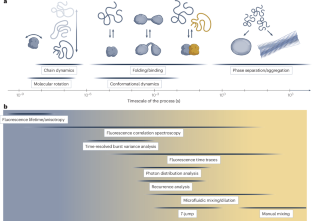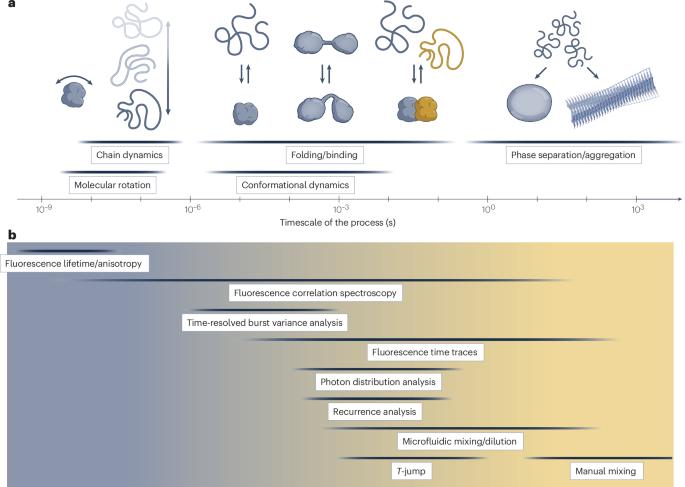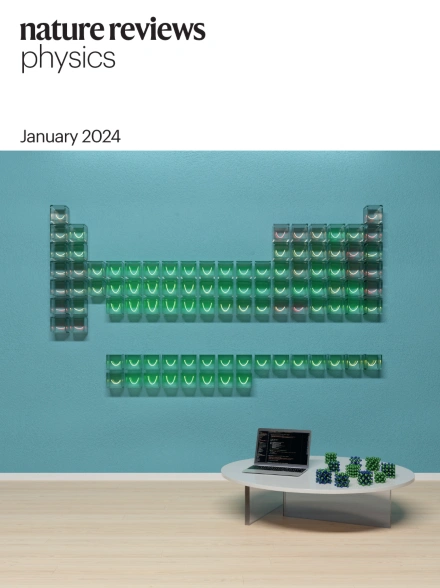Single-molecule FRET for probing nanoscale biomolecular dynamics
IF 44.8
1区 物理与天体物理
Q1 PHYSICS, APPLIED
引用次数: 0
Abstract
Single-molecule spectroscopy is a powerful method for studying the physics of molecular systems, particularly biomolecules, such as proteins and nucleic acids. By avoiding ensemble averaging, single-molecule techniques can resolve structural distributions and fluctuations even for complex and conformationally heterogeneous systems; they also reveal the close link between biological function and the statistical mechanics of the underlying processes. The combination of single-molecule fluorescence detection with Förster resonance energy transfer has become an essential tool for probing biomolecular dynamics on timescales ranging from nanoseconds to days. This Review briefly outlines the state of the art of single-molecule Förster resonance energy transfer spectroscopy and then highlights some of the most important physics-based developments that are expected to further expand the scope of the technique. Key areas of progress include improved time resolution, access to nonequilibrium dynamics and synergies with advances in data analysis and simulations. These developments create new opportunities for attaining a comprehensive understanding of the dynamics and functional mechanisms of biological processes at the nanoscale. The combination of single-molecule fluorescence detection with Förster resonance energy transfer provides a powerful probe of biomolecular dynamics on timescales ranging from nanoseconds to days. This Review outlines single-molecule Förster resonance energy transfer spectroscopy with a focus on dynamics and highlights future developments and enhanced capabilities.


用于探测纳米级生物分子动力学的单分子 FRET
单分子光谱学是研究分子系统,特别是蛋白质和核酸等生物大分子物理学的一种强大方法。通过避免集合平均,单分子技术甚至可以解析复杂和构象异构系统的结构分布和波动;它们还揭示了生物功能与基本过程的统计力学之间的密切联系。单分子荧光检测与福斯特共振能量转移的结合已成为探测生物分子动力学的重要工具,其时间尺度从纳秒到天不等。本综述简要概述了单分子佛斯特共振能量转移光谱技术的现状,然后重点介绍了一些最重要的基于物理学的发展,这些发展有望进一步扩大该技术的应用范围。进展的关键领域包括时间分辨率的提高、非平衡态动力学的获得以及与数据分析和模拟进展的协同作用。这些发展为全面了解纳米尺度生物过程的动力学和功能机制创造了新的机遇。
本文章由计算机程序翻译,如有差异,请以英文原文为准。
求助全文
约1分钟内获得全文
求助全文
来源期刊

Nature Reviews Physics
Multiple-
CiteScore
47.80
自引率
0.50%
发文量
122
期刊介绍:
Nature Reviews Physics is an online-only reviews journal, part of the Nature Reviews portfolio of journals. It publishes high-quality technical reference, review, and commentary articles in all areas of fundamental and applied physics. The journal offers a range of content types, including Reviews, Perspectives, Roadmaps, Technical Reviews, Expert Recommendations, Comments, Editorials, Research Highlights, Features, and News & Views, which cover significant advances in the field and topical issues. Nature Reviews Physics is published monthly from January 2019 and does not have external, academic editors. Instead, all editorial decisions are made by a dedicated team of full-time professional editors.
 求助内容:
求助内容: 应助结果提醒方式:
应助结果提醒方式:


